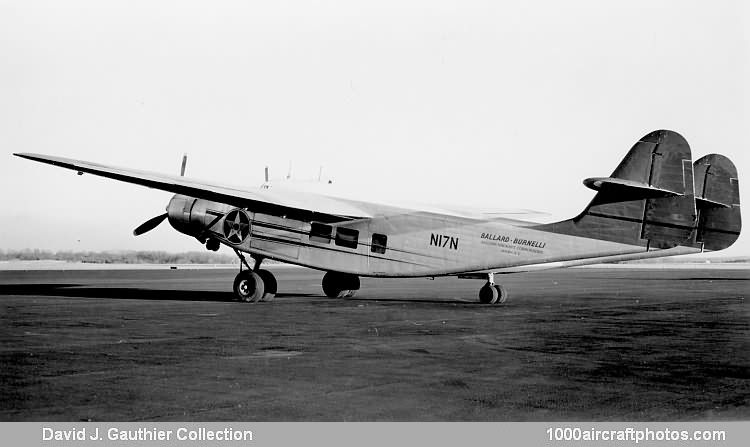08/15/2008. Remarks by Johan Visschedijk: "Aircraft with lifting fuselages has been a trademark of Vincent J. Burnelli (born Temple, Texas, USA) for over four decades, the Remington-Burnelli RB-1 was the first to fly in 1921, however, none of these designs went beyond the prototype stage. The design had the advantage to shorten the take off distance considerably, and would it make useful in bush operations, hence the Canadian Car & Foundry (CCF) acquired the manufacturing rights for the Uppercu-Bernelli UB-14 in 1936, however, it was not built by the company.
Lowell Yerex of New Zealand had founded Transportes Aéreos Centro-Americanos (TACA) in Honduras in 1931. He reached an agreement with CCF in 1943 for the construction of twenty aircraft to TACA's specification, and Vincent Burnelli was contracted for design assistance. The design was designated CBY-3 to indicate the names and number of participants: CCF, Burnelli, and Yerex. Burnelli Aircraft designed the spacious lifting fuselage with seating capacity for twenty-four passengers in four rows, and CCF undertook the wind-tunnel testing and detail design.
Registered CF-BEL-X the prototype had its 1 hr 55 min maiden flight from Cartierville, Montreal, Quebec, Canada, on July 17, 1945, with Clyde E. Pangborn and V.J. 'Shorty' Hatton at the controls. By that time, Yerex had been forced out Honduras and the TACA order was cancelled. Powered by two 1,200 hp Pratt & Whitney R-1830-S1C3-G Twin Wasp fourteen-cylinder two-row air-cooled radials, the aircraft proved to be underpowered, it was re-engined with two R-2000 Twin Wasp radials and flown again by Hutton on May 10, 1946.
In February 1947 CCF formed a subsidiary, Cancargo Aircraft Manufacturing Co. Ltd., entirely to develop and eventually produce the aircraft that was from then marketed as the Cancargo CAM-1 Loadmaster. It was evaluated by the USAF at Wright Field on June 22, 1948, proving it had limited utility as a cargo aircraft. In 1951 Cancargo suspended all activities to certify the aircraft and it was exported to the USA, where is was registered to the Central Aircraft Corp. of New York (the successor to Burnelli Aircraft) as N17N on February 9. In July 1952 it was re-engined with two 1,700 hp Wright R-2600-8 Cyclone radials. The company name changed to Burnelli Avionics and then to Ballard Aircraft Corp.
Despite some proving flights in Canada in 1955 and Venezuela in 1957, no orders were forthcoming and the aircraft made its last flight on December 8, 1959 to Friendship Airport, Baltimore, Maryland, where it became an engineless derelict. In 1973 it was acquired by the Connecticut Aeronautical Historical Association with the intension to restore it for display at the Bradley Air Museum, (now the New England Air Museum) in Windsor Locks, Connecticut.
01/31/2015. Over the winter of 2012/2013, the long awaited restoration of the aircraft was finally started and is presently in an advanced state at the New England Air Museum."
